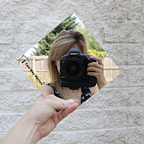Mind-Bending Mirror Illusions of Kokichi Sugihara
Dive inside the world of ambiguous objects and optical illusions that will have you second-guessing your reality
Illusions are a fun way to trick your brain and dig a little deeper into the realm of the impossible. But, what if they weren’t impossible? What if it was something that was very much do-able if you just expanded your mind a little?
Kokichi Sugihara has been at the optical illusion game for years — maybe longer than some of us have even been alive. His passion for illusions started as simple drawings but they’ve expanded over the years to 3D objects; some have even won awards!
Sugihara is a Mathematical engineer at Meiji University in Japan. The reasoning behind all of these illusions isn’t simply for fun though — he’s studying the concept of human depth perception. Depth perception put simply is one’s ability to see things in 3 dimensions, as well as how far away an object is.
He tests his theories on depth perception by creating stunning optical illusions that will have you questioning your own eyes.
Ambiguous Cylinder Illusion
This illusion is one that I tried out myself. I was lucky enough to get my hands on a 3D printer, so I simply uploaded the file and the results were crazy.
When you have the object turned one way, it appears as if it's interlocking squares — but the reflection is interlocking circles.
Then when the object looks like circles…you guessed it, the reflection looks like squares!
The optical illusion is created by a wave on the edges of the shape — one side has upward facing arches, and the other side has arches that are facing downward. The shape doesn’t technically have any “complete” sides, your brain just fills in the gaps. Weird, right?
Luckily for Sugihara, 3D printers became an accessible tool. You can find them on Amazon, or private vendors at a reasonable cost (depending on what you’re looking to print). Before 3D printers, Sugihara was only creating his illusions with paper. This meant that all of his illusions were constructed with paper, so they had to have straight edges.
Having straight edges illusions didn’t mean that they were any less elaborate or intriguing — it just meant he had to be creative.
Ambiguous Garage Roof
This is a commonly known illusion by Sugihara that was crafted with paper. It can also be made with a 3D printer, depending on the sturdiness level you’re looking for!
In this illusion, you’re seeing a miniature carport that appears to have a rounded, almost barn-like roof. However, when you look at the reflection, the roof looks zig-zagged. You can also spin it so that the roof looks zig-zagged in real-time, but the reflection appears to be rounded. The roof is actually neither rounded nor zig-zagged, but rather an almost completely flat object with a specific cut to it.
Invisible Object Illusion
This is another creation that you can cut out of a piece of paper and re-create right at home!
To the eye, it appears that there is a full hexagon sitting in front of the mirror. But, once again, the reflection appears totally different. The reflection appears to only be a half-hexagon, with the bottom exposing the surface it’s sitting on.
The trick in this illusion is that only the upper half of the hexagon is in a 3-dimensional form. The bottom half is simply a cutout that gives the appearance of being 3-dimensional.
While you may think that I’ve spoiled these illusions for you, that’s not the case at all. The beauty of Sugihara’s illusions is that even after you understand how they are constructed, your brain still easily falls into the trap of believing what it sees!
Mr. Sugihara has hundreds of illusions to date — so I challenge you to challenge yourself with his mind-bending illusions. How many can you figure out on your own?
